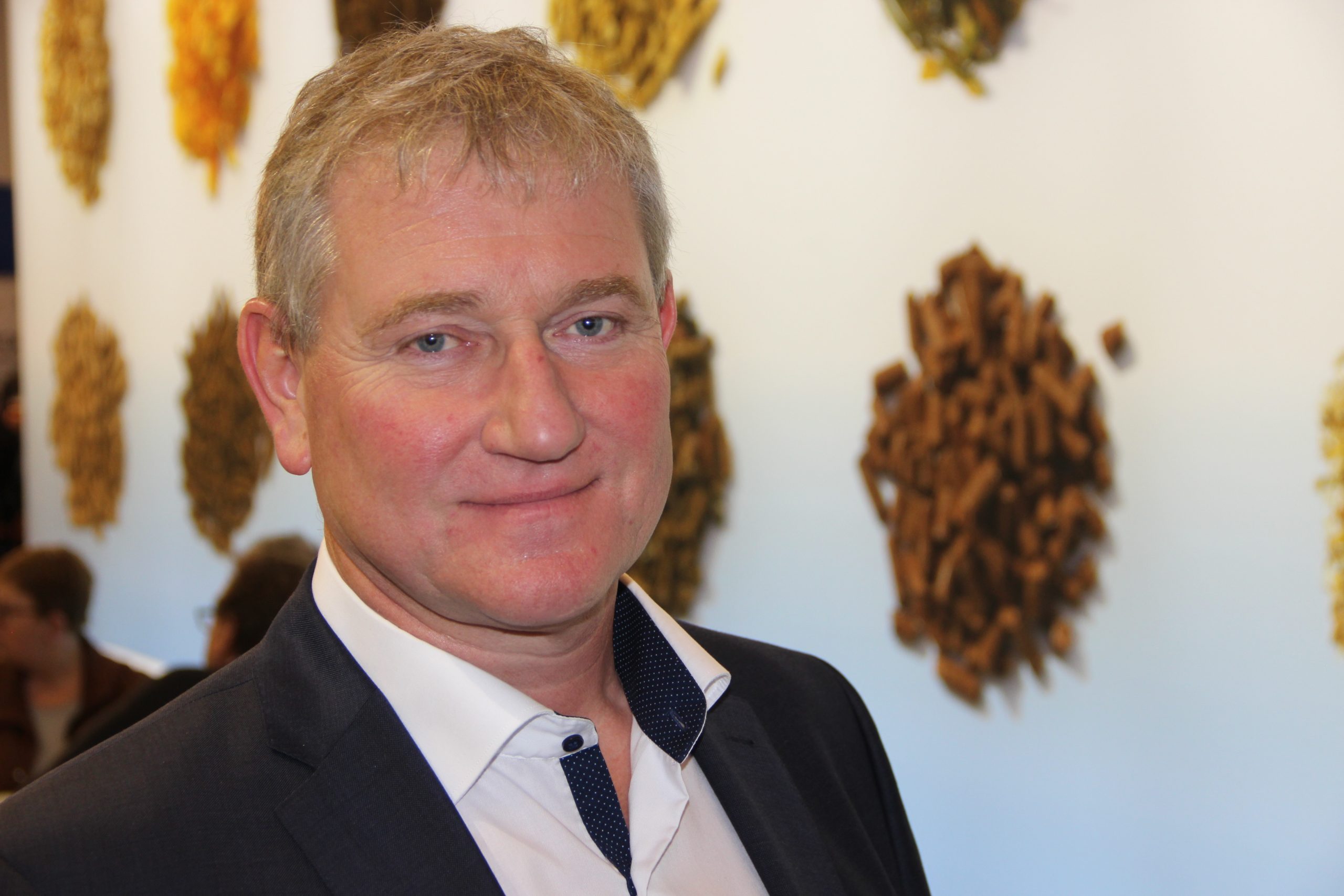New boar feed could be the silver bullet in preventing ‘stinkers’

Animal feed company Dumoulin have developed a feed to prevent boar meat from smelling after heating. Head of research Werner Reuter considers this a breakthrough. “Our feed could be the answer to conventional castration.”
Boar taint is the offensive odour that can be evident during the cooking or heating of pork or pork products derived from non-castrated male pigs once they have reached puberty. For many years, companies have been trying to develop alternative strategies and to come up with the silver bullet, to make conventional castration unnecessary. This is needed because the European Union aims to ban conventional castration as of 2018.
The Belgian feed company Dumoulin may have found the solution. The feed (called Taintstop) is a finisher feed for uncastrated boars that prevents boar taint during roasting or heating of the meat. The product was officially launched at the agricultural fair Agriflanders in Belgium. Director of research and development at Dumoulin, Werner Reuter, explains what it entails.
Sounds too good to be true
“Frankly, this is the reaction most people have when we explain our product. But this feed we have developed really works. We have done tests at the slaughter line on carcasses from 200 Piétrains boars. In addition to this, we have also done laboratory tests at the State Office for Agriculture and Fisheries in Belgium (ILVO). At ILVO, four trained people (‘noses’) did smelling tests for two days in a row. They detected the boar taint in 8% of the pigs in the control group. In the group that received our feed, zero ‘stinkers’ were detected. The samples we took from the carcasses were also chemically tested for skatole and androstenone, the two substances responsible for boar taint. Regarding skatole, all animals were found to be below the limit of 250 ppb (parts per billion). For androstenone, 16% of the boars in the control group were over the limit of 3,000 ppb and 4% of the animals in the test group were above this level. These large differences proves that the anti-boar taint feed is working”.
So the amount of skatole can be influenced with feed. How does it work?
“Our feed stimulates the digestion. With certain additives, and especially more fibres, the digestion is improved in the colon and less skatole remains behind. Skatole is a waste product of amino acids. Skatole and androstenone are broken down in the liver. If the liver has to break down less skatole, more of the hormone androstenone is broken down. This in turn results in a decreased risk of ‘stinkers’. The amount of skatole that the liver processes can thus be influenced via nutrition. This has an indirect effect on the amount of androstenone that remains in the pig. The sexual behaviour of boars is not affected in any way. ”

Is this feed more expensive?
“This feed is € 100 per tonne more expensive than conventional growing/finishing feed. We recommend supplying around 60 kg of our feed to intact boars, before they go to slaughter. This equals to feeding it for about three weeks. This also returns in a lower feed conversion up to slaughter. If gilts and boars are mixed and housed together, a farmer can still supply the feed, but the side effect is that this will be relatively more expensive, as the gilts don’t need the feed, but also eat it in the group housing.
So the problem with ‘stinkers’ has been solved?
“Yes, our feed is a good solution and similar to chemical castration or conventional castration. With this nutritional approach, we have made a significant step in solving the problem of ‘stinkers’ when using boars for fattening. There is a lot of interest in our product in the pig industry. Currently there is a second trial running with Duroc boars. The first test was with Piétrains. And we applied for a patent last December.”











